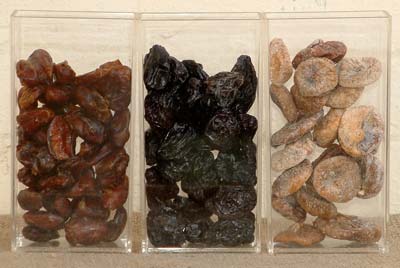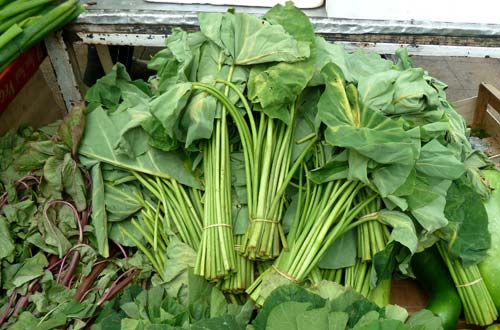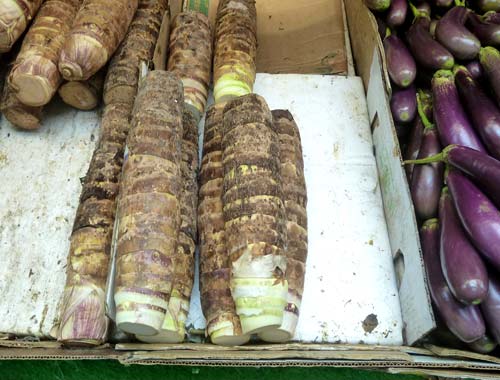
Sour dried plums (prunes). Used as a souring agent in stews. Some people describe them as dried apricots. Could you send details (and a picture) to queries@whatamieating.com if you know more?

Sour dried plums (prunes). Used as a souring agent in stews. Some people describe them as dried apricots. Could you send details (and a picture) to queries@whatamieating.com if you know more?

Taro leaves. Colocasia leaves. Taro is a name used to cover many root crops grown in tropical regions, most commonly Colocassia esculenta. The leaves come from plants cultivated in warm climates both for their leaves and tuberous, potato-like roots, or corms. The roots, the flesh of which may vary from white to pink, have a delicate flavour and can be peeled and boiled, roasted, mashed, fried or included in a stew and look like a pointed swede, often with a ridged surface and protruding roots, with hairy beige or brown skin. They may weigh as much as 2 kg (4¼ lb). The leaves are large and floppy, fan-like and used as a vegetable or in soups. Some varieties of taro grow extra corms which bud on the main corms, or dasheens. These "buds" are known as eddos, particularly in the West Indies. Taro is a good source of high-grade protein. Whole taros with the skin intact are preferable to those that come peeled.

Taro. Colocasia. A plant grown both for its leaves and tuberous, potato-like roots, or corms. The roots, the flesh of which may vary from white to pink, have a delicate flavour and can be peeled and boiled, roasted, mashed, fried or included in a stew.e flesh of which may vary from white to pink, have a delicate flavour and can be peeled and boiled, roasted, mashed, fried or included in a stew.